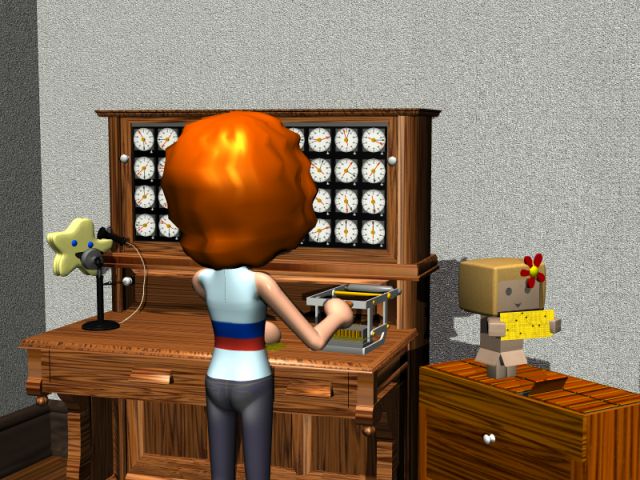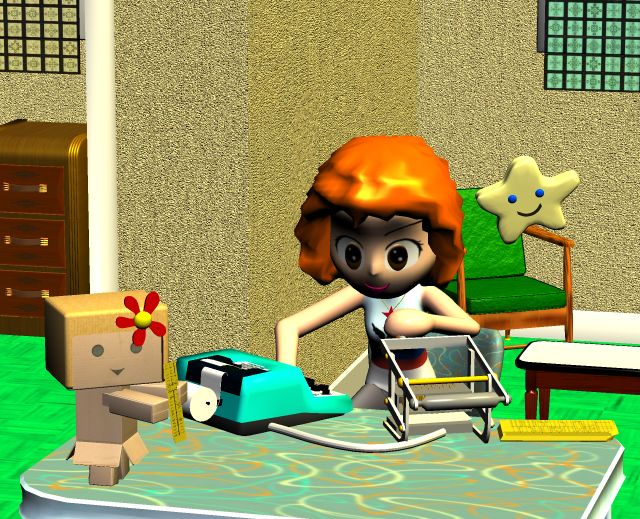Friday, November 04, 2016
Y no Personal Hollerith?
The original Hollerith machine....
 ...was primarily a sorter. It read punch cards carrying data for individual customers or items, and sorted the cards according to a program that was set manually on a plugboard. It also counted punches when specified, and ran basic math on the counts. Modern computers still spend 90% of their time sorting. Despite the name, computing is a side gig.
Why didn't Hollerith/IBM (or anyone else) make a small-scale sorter for small business?
A company with a dozen employees needs plenty of programmable calculation. Weekly payroll for each employee could be programmed by a card representing his W2 and other deductions. Daily deposits, invoices and checks need to be separated by category and recorded.
From 1900 to 1970, small businesses used mechanical adding machines for the calculation itself, and ran the 'programming' part strictly by hand. Read the W2 or invoice by eye, write the checks and ledgers with pen.
Hollerith/IBM gradually evolved its electromechanical sorters to fully electronic computers after 1950. Those sorters and computers remained BIG AND EXPENSIVE in initial cost and maintenance. Only the very biggest companies could afford to buy and operate them.
There's no technical reason why a mechanical adder couldn't read punch cards or McBee cards, to reliably perform and print the payroll for each employee or the invoice for each customer.
...was primarily a sorter. It read punch cards carrying data for individual customers or items, and sorted the cards according to a program that was set manually on a plugboard. It also counted punches when specified, and ran basic math on the counts. Modern computers still spend 90% of their time sorting. Despite the name, computing is a side gig.
Why didn't Hollerith/IBM (or anyone else) make a small-scale sorter for small business?
A company with a dozen employees needs plenty of programmable calculation. Weekly payroll for each employee could be programmed by a card representing his W2 and other deductions. Daily deposits, invoices and checks need to be separated by category and recorded.
From 1900 to 1970, small businesses used mechanical adding machines for the calculation itself, and ran the 'programming' part strictly by hand. Read the W2 or invoice by eye, write the checks and ledgers with pen.
Hollerith/IBM gradually evolved its electromechanical sorters to fully electronic computers after 1950. Those sorters and computers remained BIG AND EXPENSIVE in initial cost and maintenance. Only the very biggest companies could afford to buy and operate them.
There's no technical reason why a mechanical adder couldn't read punch cards or McBee cards, to reliably perform and print the payroll for each employee or the invoice for each customer.
 We tend to think of the desktop electronic computer as a late development, but in fact the time interval between wide adoption of mainframes and the first PC was just about zero. Mainframes became common in mid-to-large businesses around 1960, and Olivetti's first personal computer came in 1964.
Why didn't the same downward spread of demand happen in the mechanical era?
We tend to think of the desktop electronic computer as a late development, but in fact the time interval between wide adoption of mainframes and the first PC was just about zero. Mainframes became common in mid-to-large businesses around 1960, and Olivetti's first personal computer came in 1964.
Why didn't the same downward spread of demand happen in the mechanical era?
 ...was primarily a sorter. It read punch cards carrying data for individual customers or items, and sorted the cards according to a program that was set manually on a plugboard. It also counted punches when specified, and ran basic math on the counts. Modern computers still spend 90% of their time sorting. Despite the name, computing is a side gig.
Why didn't Hollerith/IBM (or anyone else) make a small-scale sorter for small business?
A company with a dozen employees needs plenty of programmable calculation. Weekly payroll for each employee could be programmed by a card representing his W2 and other deductions. Daily deposits, invoices and checks need to be separated by category and recorded.
From 1900 to 1970, small businesses used mechanical adding machines for the calculation itself, and ran the 'programming' part strictly by hand. Read the W2 or invoice by eye, write the checks and ledgers with pen.
Hollerith/IBM gradually evolved its electromechanical sorters to fully electronic computers after 1950. Those sorters and computers remained BIG AND EXPENSIVE in initial cost and maintenance. Only the very biggest companies could afford to buy and operate them.
There's no technical reason why a mechanical adder couldn't read punch cards or McBee cards, to reliably perform and print the payroll for each employee or the invoice for each customer.
...was primarily a sorter. It read punch cards carrying data for individual customers or items, and sorted the cards according to a program that was set manually on a plugboard. It also counted punches when specified, and ran basic math on the counts. Modern computers still spend 90% of their time sorting. Despite the name, computing is a side gig.
Why didn't Hollerith/IBM (or anyone else) make a small-scale sorter for small business?
A company with a dozen employees needs plenty of programmable calculation. Weekly payroll for each employee could be programmed by a card representing his W2 and other deductions. Daily deposits, invoices and checks need to be separated by category and recorded.
From 1900 to 1970, small businesses used mechanical adding machines for the calculation itself, and ran the 'programming' part strictly by hand. Read the W2 or invoice by eye, write the checks and ledgers with pen.
Hollerith/IBM gradually evolved its electromechanical sorters to fully electronic computers after 1950. Those sorters and computers remained BIG AND EXPENSIVE in initial cost and maintenance. Only the very biggest companies could afford to buy and operate them.
There's no technical reason why a mechanical adder couldn't read punch cards or McBee cards, to reliably perform and print the payroll for each employee or the invoice for each customer.
 We tend to think of the desktop electronic computer as a late development, but in fact the time interval between wide adoption of mainframes and the first PC was just about zero. Mainframes became common in mid-to-large businesses around 1960, and Olivetti's first personal computer came in 1964.
Why didn't the same downward spread of demand happen in the mechanical era?
We tend to think of the desktop electronic computer as a late development, but in fact the time interval between wide adoption of mainframes and the first PC was just about zero. Mainframes became common in mid-to-large businesses around 1960, and Olivetti's first personal computer came in 1964.
Why didn't the same downward spread of demand happen in the mechanical era?Labels: Alternate universe, Patient things
